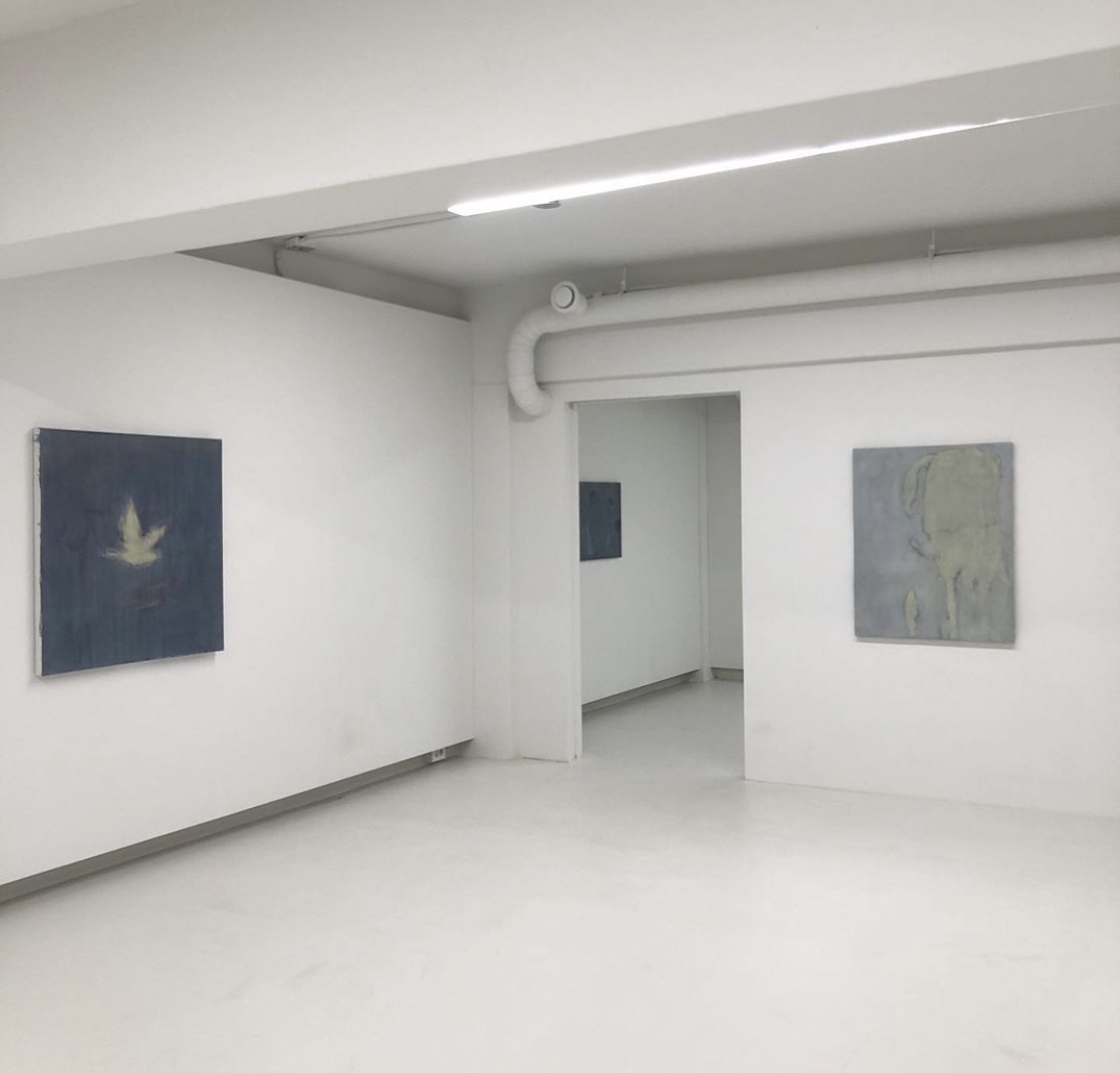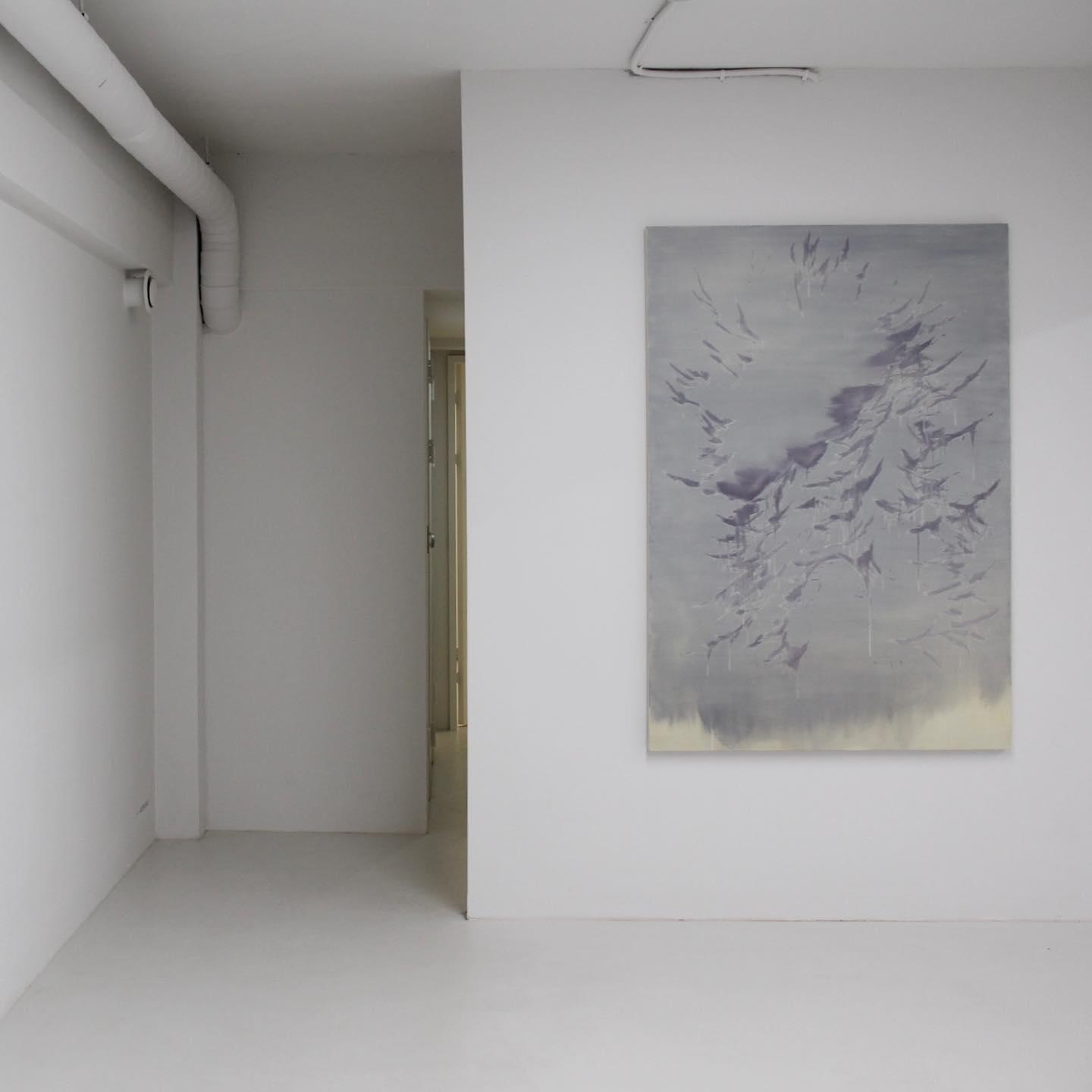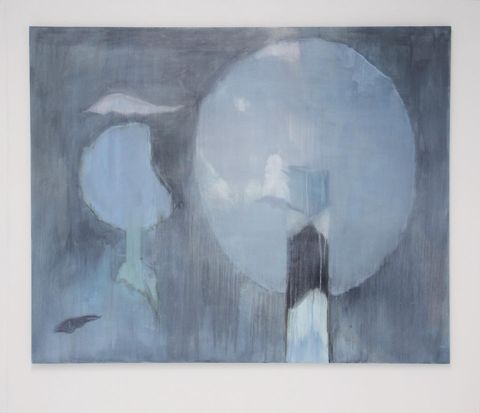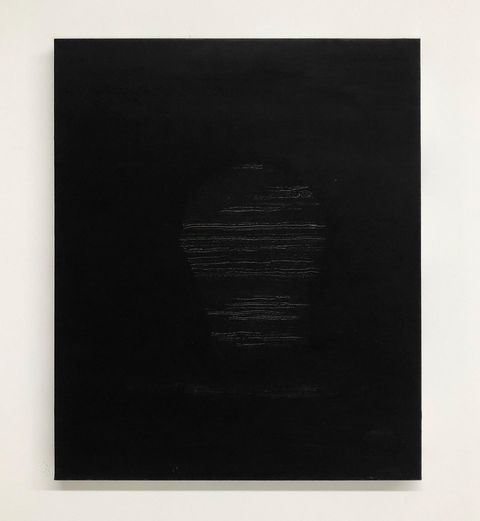
installation view 1

installation view 2

installation view 3

installation view 4

ALTE POST(後), oil on canvas, 38x45cm, 2020

잠보다 긴 꿈, oil on canvas, 38x45.5cm, 2021
송재호 작가의 그림은 화면의 중앙에 구상적인 모티브가 오롯이 표현되어 있을 때조차도 충분히 모호하고 추상적이다. 그래서 그림을 ‘본다’는 특별한 지각행위를 그저 일상적, 논리적 사고로만 연결시킨다면 우리에게 이 작가의 그림은 단지 한 편의 배타적인 수수께끼가 되어 버리고 만다. 미묘한 색채들 사이로 알 수 없는 형태들이 긴장감을 만들어내는 고요한 화면 위에는 그 어떤 소통을 기대하는 친절함, 과한 묘사와 설명 같은 것은 전혀 존재하지 않기 때문이다. 작가의 그림을 지켜보아온 시간이 이 십 년을 넘었더라도, 나는 여전히 그의 그림에 대해서는 호감과 함께 늘 일정 정도의 불편함과 어려움을 느낀다. 그의 그림은 닫힌 문 너머 남의 정원을 엿보는 것처럼 좁힐 수 없는 거리감에도 불구하고 이상하게 매력적이다. 화면 위에 드러나 보이지도 않는 것을 보아야만 할 것 같은 이상한 기분이 들어서 자꾸만 담장 가까이 다가서게 만든다. 대체 그의 그림에 어떻게 다가갈 수 있을까? 그것에 대해 무슨 말을 할 수 있을까? 알떼에고에서 열렸던 지난 2015년 가을의 개인전을 떠올려본다. 그 이후의 시간 속에서 작가가 경험한 모든 것이 이번 전시에 소개되는 그림들에 녹아들어 있다면. 그렇다, 아마도 무언가 흥미로운 변화를 찾아낼 수 있을 것 같다는 생각이 든다.
완벽함에 대한 강박이 때로 작가에게 체념과 우울을 안겨줄지언정 그의 회화는 모호한 만큼 내적 가능성을 가득 품은채로 여러 방향에서의 다양한 해석을 가능하게 한다. 송재호 작가는 종종 회화 공간의 깊이에 대해 골몰하곤 했는데, 그의 열중은 꽤 긴 세월 일관된 것이다. 예컨대 그는 이십대 시절에도 사각의 캔버스에 자신을 둘러싼 음악과 공기를 그려넣고 싶어 했으니 말이다. 그것은 즉흥적이고 감성적인 듯 보이면서도 그 방식에 있어서 굉장히 집요하고 탐색적인 측면이 있어 보였다. 그리고 이상하게 들리겠지만, 그가 추구하는 공간의 심도는 늘 시간의 흐름이라는 부분을 포함해야만 온전해진다. 그것은 선적인 흐름을 이루는 일상적인 시간개념이 아닌, 이를테면 메를로 퐁티Merleau Ponty의 ‘수직적’ 시간에 가까운 것임을 짐작해본다. 그 낯선 시간의 구조는 당장 화가의 눈앞에 펼쳐진 풍경 말고도 그 배후에 비가시적, 잠재적으로 존재하는 층위와 공간적 심도를 축적과 회고를 통해 한 화면 위에 겹쳐지도록 이끈다. 회화의 공간 속에 그는 보이는 것, 보이지 않는 것 모두를 엮어 자신을 둘러싼 세계를 드러내 보인다. 수많은 레이어를 겹쳐 정성들여 구축한 배경과 간결한 드로잉 선, 스스로 빛을 내는 것 같은 고요한 실루엣, 젖은 듯 보이는 색 면들을 통해서. 그리고 어쩌면 그의 그림을 이해하기 위한 중요한 실마리들은 모두 이 담백하고 평평한 ‘배경’에 숨어있는지도 모른다. (실제 작업의 과정에서도 작가 본인이 굉장히 신경 써서 그려내는 부분이기도 하다) 그리하여 제대로 배경이 만들어지기만 하면, 그 위에 떠오른 형상은 그 부력을 이용해 쉽게 우리의 시야를 유영할 수 있게 되는 것이다. 형상은 사실 그것을 띄워 올린 배경 속에 숨겨진 것들의 힘을 은유하고 있는 걸까?
한편 개인적으로 나는 그의 그림이 그림을 그리는 사람들에게 더욱 매력적일 거라고 생각하고 있는데, 손에서 비롯하는 쾌의 감각이 인지할 수 있는 독특한 세계가 거기에 있기 때문이다. 온전히 집중해서 그림을 그릴 때 그는 어떤 상태일까. 그림 그리는 일이 작가는 고통스럽다고 표현하곤 했다. 그렇다면 대체 왜 계속 그리는 걸까? 그에게 있어서 작업의 고통과 지극한 행복감이 서로 배타적인 것이 아닐 수 있다는 것을 나는 최근에야 깨달았다. 사실 논리적으로 이해했다기보다는 작가의 그림을 보면서 문득 자연스레 납득하게 되었다. 봄처럼 흔들리는 잎사귀와 바람을 품고서 고통스럽기만 하기도 어려운 일이 아니겠는가. 그렇다곤 하더라도 왜 그렇게까지 괴로운 지는 여전히 잘 이해할 수 없지만.
이번 전시에 소개되는 송재호 작가의 그림들은 이전의 작업들과는 조금 다른 결을 가지고 있다. 그에게 더 긴 시간과 더 깊은 고독이 있었기 때문만은 아닌 것 같다. 비로소 무언가를 비워 낸 내부의 공동이 만들어낸 낯선 울림 같은 것일 수도 있고, 작가의 심리적 상태가 작업에의 의지와 부딪혀 만들어내는 긴장감 같은 것일 수도 있겠다.
그의 세계가 어떤 모습을 유지하고 있는지를 그가 그린 그림을 통해서 가늠해보는 것이 무척 즐겁다. 고립된 채 일초일목(一草一木), 일석일금(一石一禽)에의 경애를 담은 고요한 시간을 지나오면서 그의 세계는 다시 한 번 그 형태를 바꾼 것 같다. 작가의 ‘산책의 끝’에 펼쳐진 풍경이 어떤 것인지 궁금해진다. 그가 만든 회화의 공간, 그 정지된 시간 속에서 이국의 음악이 울린다. 소리 없는 빗방울 같은 것이 천천히 땅을 적시고 있을 수도 있다. 늘 무언가는 자라나고 또 무언가는 죽어가고 있는 그의 정원은 담장 밖에 서 있는 우리를 물끄러미 바라본다. 보는 이는 보이는 것과 쉬이 뒤섞이고, 그렇게 누구의 정원인지에 상관없이 다시 돌아와 서성이는 마음은 바람에 떨어진 능금을 기쁘게 줍는다.
(ENG)
Song Jae-ho's paintings are vague and abstract enough even when the figurative motifs are revealed in the center of the painting. So if we link this particular experience of perception like seeing pictures with just casual and logical way of thinking, this artist's painting becomes just one exclusive mystery for us. In a calm image where unknown figures create tension between subtle colors, there is no such things like a kindness or overly descriptive images that expecting for communication. Even if I have watched his paintings for more than 20 years, with my admiration for his art, I still feel some kind of discomfort and difficulty for understanding his paintings. Nevertheless, his paintings are strangely attractive, as if peeping through a closed door into someone else's beautiful garden. Because of the feeling that I have to find something that I can't even see on the painting, somehow I keep getting a little closer to his garden wall. How on earth can I approach his paintings? What can I say about that? I recall his solo exhibition at Alterego in 2015. If everything the artist experienced during the time since then was reflected in these paintings, I think maybe we can find some interesting changes.
Although the obsession with perfection may sometimes cause the painter to resign and depress, his paintings are full of internal possibilities and allow for various interpretations in different directions. Song Jae-ho often concentrated on the depth of the pictorial space, and his enthusiasm has been consistent for quite a long time. For example, even in his twenties, he wanted to paint the tremors of music and air surrounding him in his canvas. It seemed spontaneous and sentimental, but there was a very persistent and inquisitive aspect to the way it was. It may sound strange, but the depth of the pictorial space he pursues is always intact only when it includes the part of "the flow of time." I guess it's more likely not the usual concept of time that form of linear flow, but rather the vertical time of Merleau-Ponty, for example. This vertical time structure makes potentially existing layers and spatial depths to be seen fused on the same pictorial space as the landscape in front of the artist’s eyes now. In the space of painting, he reveals the world surrounding him by weaving all together what is visible and invisible. Through the carefully built background which is made of numerous layers, simple drawing lines, quiet silhouettes that seem to shine on their own, and wet-looking color planes. And perhaps all the important clues to understanding his paintings are hidden in this plain, flat 'background area'. (Actually, it's the part of the process of the painting that the artist himself pays a lot of attention to.) Thus once the background area is properly created, the figure on top of it can easily capture our eyes using its buoyancy. In fact, does the figure is metaphor of the power of the things hidden in the background area which raising the image up?
On the one hand, personally I think his paintings will be more attractive to painters, because in his painting, there is a unique aspect composed by hand-sensing pleasure. What is he like when he draws with full concentration? He used to confess that the painting process was painful for him. Then why does he keep drawing? It was only recently that I realized that the pain of work and extreme euphoria may not be mutually exclusive to him. In fact, rather than understanding logically, all of a sudden I was persuaded naturally by his paintings. Wouldn't it be hard to just suffering with a world of spring-like swaying leaves and gentle winds? Even so, I still don't understand why it's so painful.
The paintings of Song Jae-ho that presented in this exhibition, have a slightly different aspects from his previous works. I don't think it's just because he's gone through a longer time and a deeper loneliness. It could be a strange echo created by an internal cavity made by emptying something, or a tension created by the artist's psychological state against his will to work.
It's very pleasant to gauge what his world looks like today through his paintings. His world once again seems to have changed its form as he passed the silent days of the isolation with admiration for every little thing in the world. I wonder what kind of scenery there will be at the end of the promenade of the artist. In his painting space where the time is frozen, the music of foreign countries resonates. Something like silent raindrops may be slowly wetting the ground. His garden where always something grows and always something dies, It gazes at us who standing outside the fence. We and what we see mixed up easily. regardless of whose garden it is, the returned wandering heart happily picks up the windfallen apple.